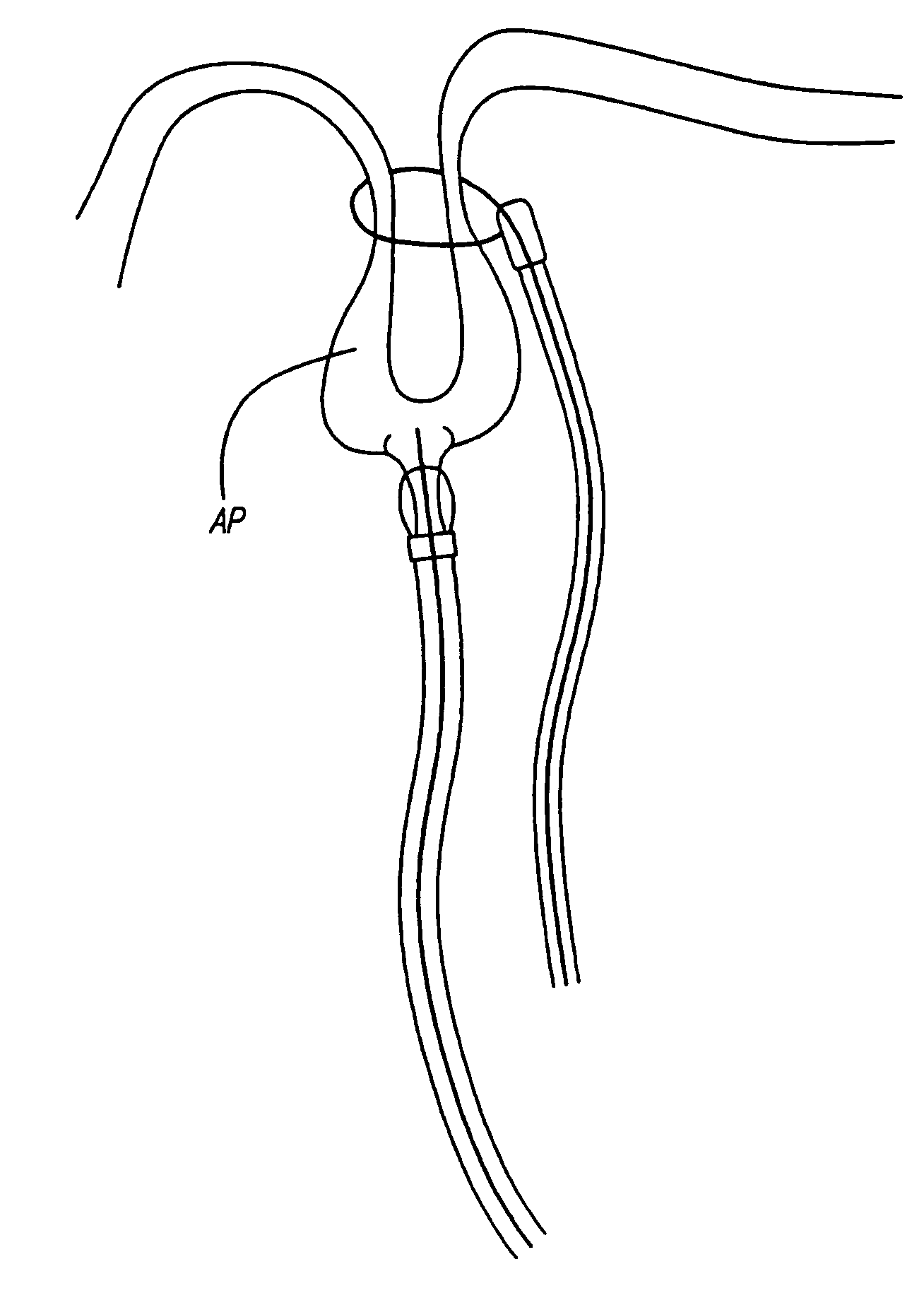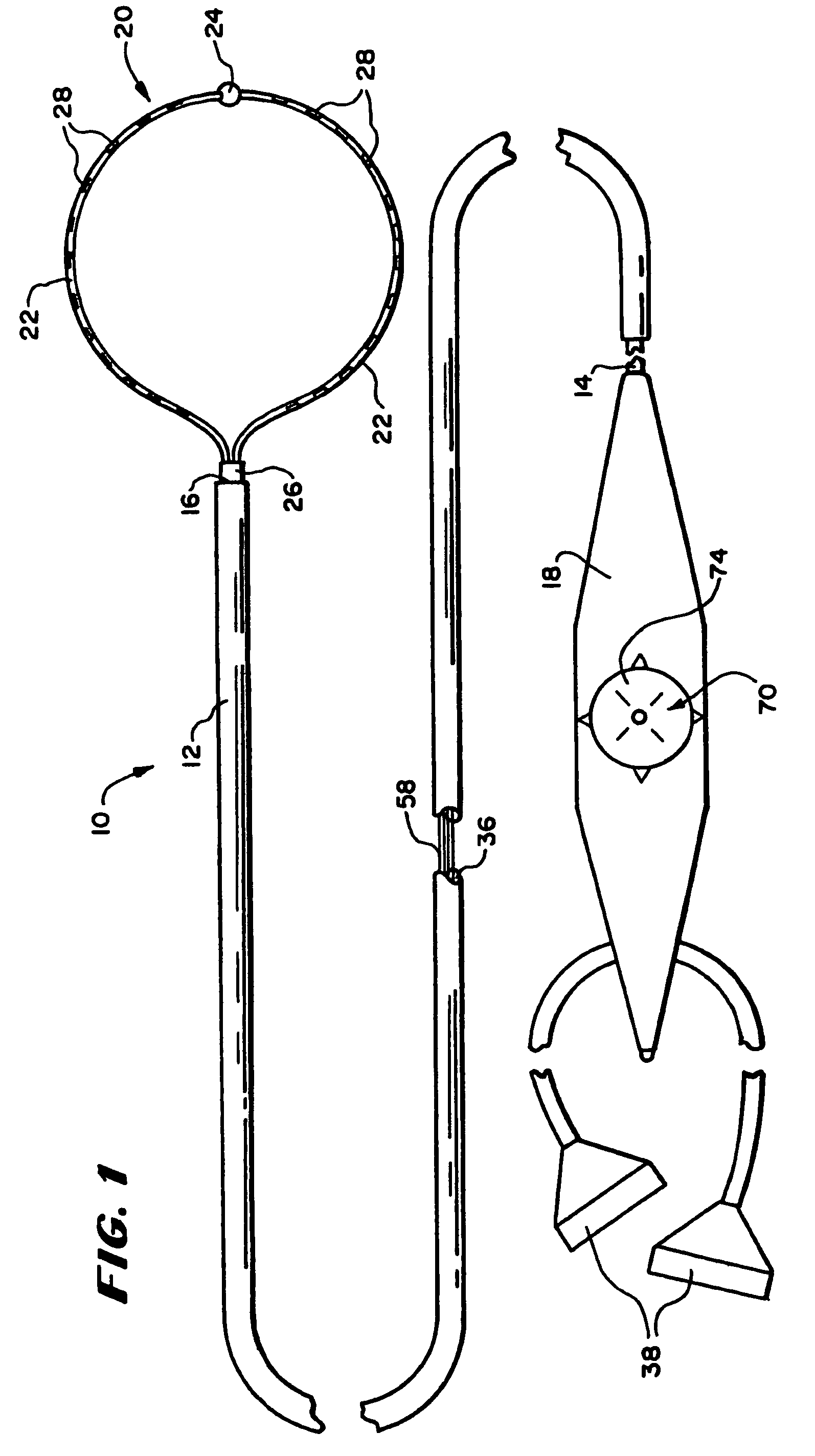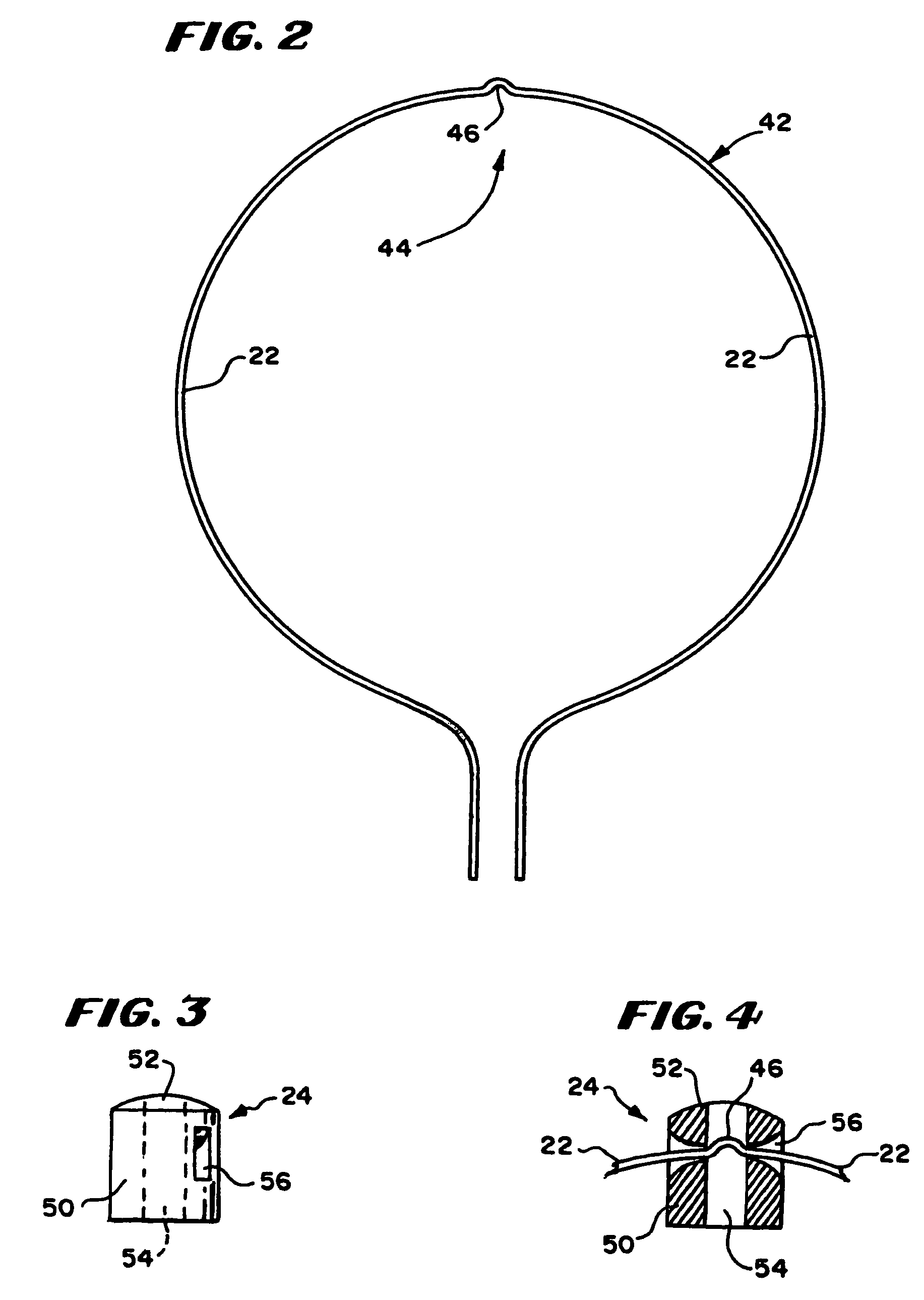Surgical method and apparatus for positioning a diagnostic or therapeutic element within the body
a technology of diagnostic or therapeutic elements and surgical methods, applied in the direction of surgical forceps, surgery, coatings, etc., can solve the problems of affecting the normal activation of the left and right arteries, and suffering consequences, so as to simplify the creation of complex lesions patterns and achieve beneficial therapeutic effects
- Summary
- Abstract
- Description
- Claims
- Application Information
AI Technical Summary
Benefits of technology
Problems solved by technology
Method used
Image
Examples
Embodiment Construction
[0165]The following is a detailed description of the best presently known modes of carrying out the inventions. This description is not to be taken in a limiting sense, but is made merely for the purpose of illustrating the general principles of the inventions.
[0166]The detailed description of the preferred embodiments is organized as follows:[0167]I. Bi-Directional Flexible Structures[0168]II. Probe-Type Apparatus[0169]III. Operative Elements[0170]IV. Epicardial Applications of Probe-Type Apparatus[0171]V. Endocardial Applications of Probe-Type Apparatus[0172]VI. Other Surgical Applications[0173]VII. Apparatus that Apply a Clamping Force[0174]VIII. Applications of Apparatus that Apply a Clamping Force[0175]IX. Power Control
The section titles and overall organization of the present detailed description are for the purpose of convenience only and are not intended to limit the present invention.
[0176]This specification discloses a number of electrode structures, mainly in the context ...
PUM
| Property | Measurement | Unit |
|---|---|---|
| length | aaaaa | aaaaa |
| length | aaaaa | aaaaa |
| length | aaaaa | aaaaa |
Abstract
Description
Claims
Application Information
 Login to View More
Login to View More - R&D
- Intellectual Property
- Life Sciences
- Materials
- Tech Scout
- Unparalleled Data Quality
- Higher Quality Content
- 60% Fewer Hallucinations
Browse by: Latest US Patents, China's latest patents, Technical Efficacy Thesaurus, Application Domain, Technology Topic, Popular Technical Reports.
© 2025 PatSnap. All rights reserved.Legal|Privacy policy|Modern Slavery Act Transparency Statement|Sitemap|About US| Contact US: help@patsnap.com



